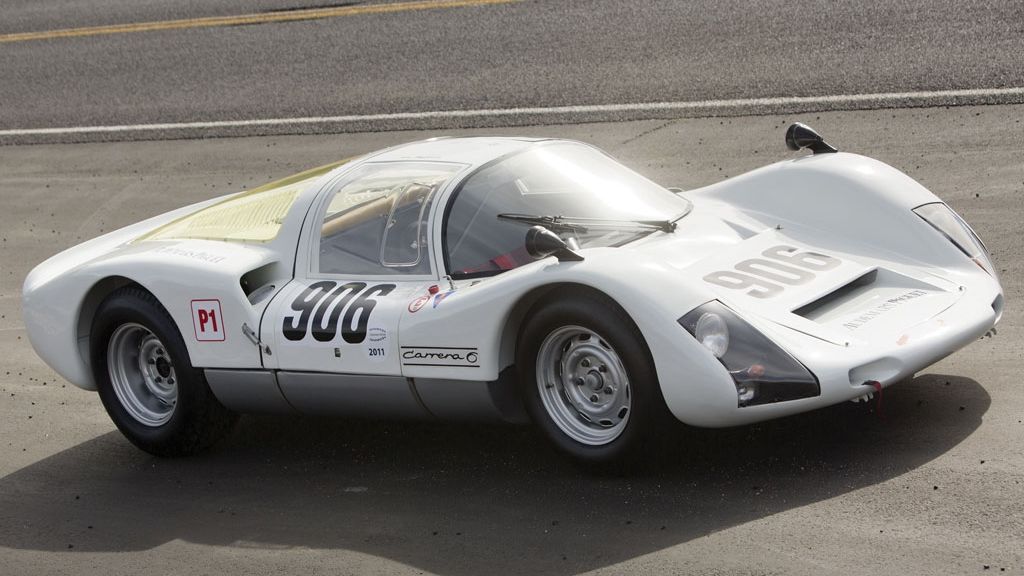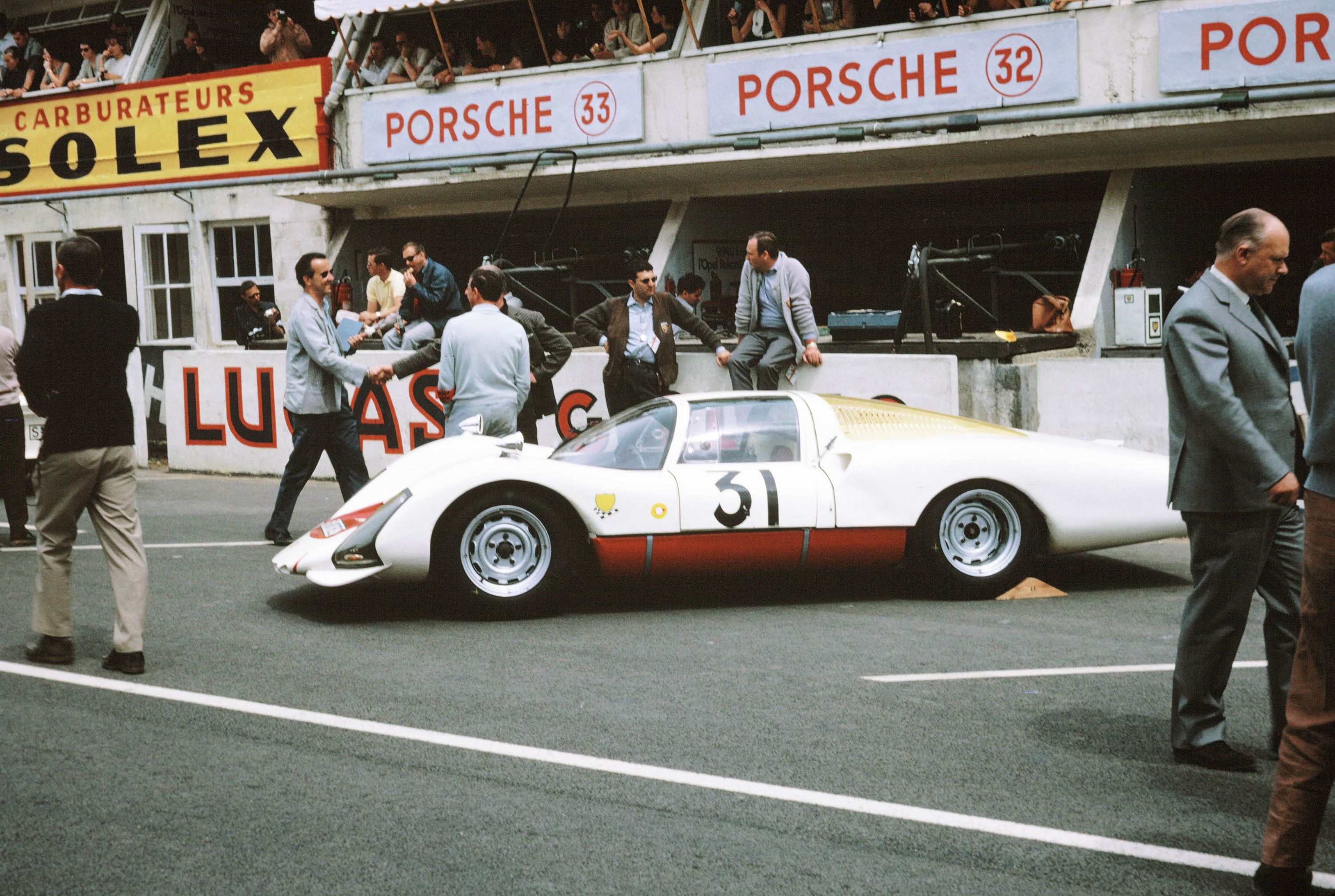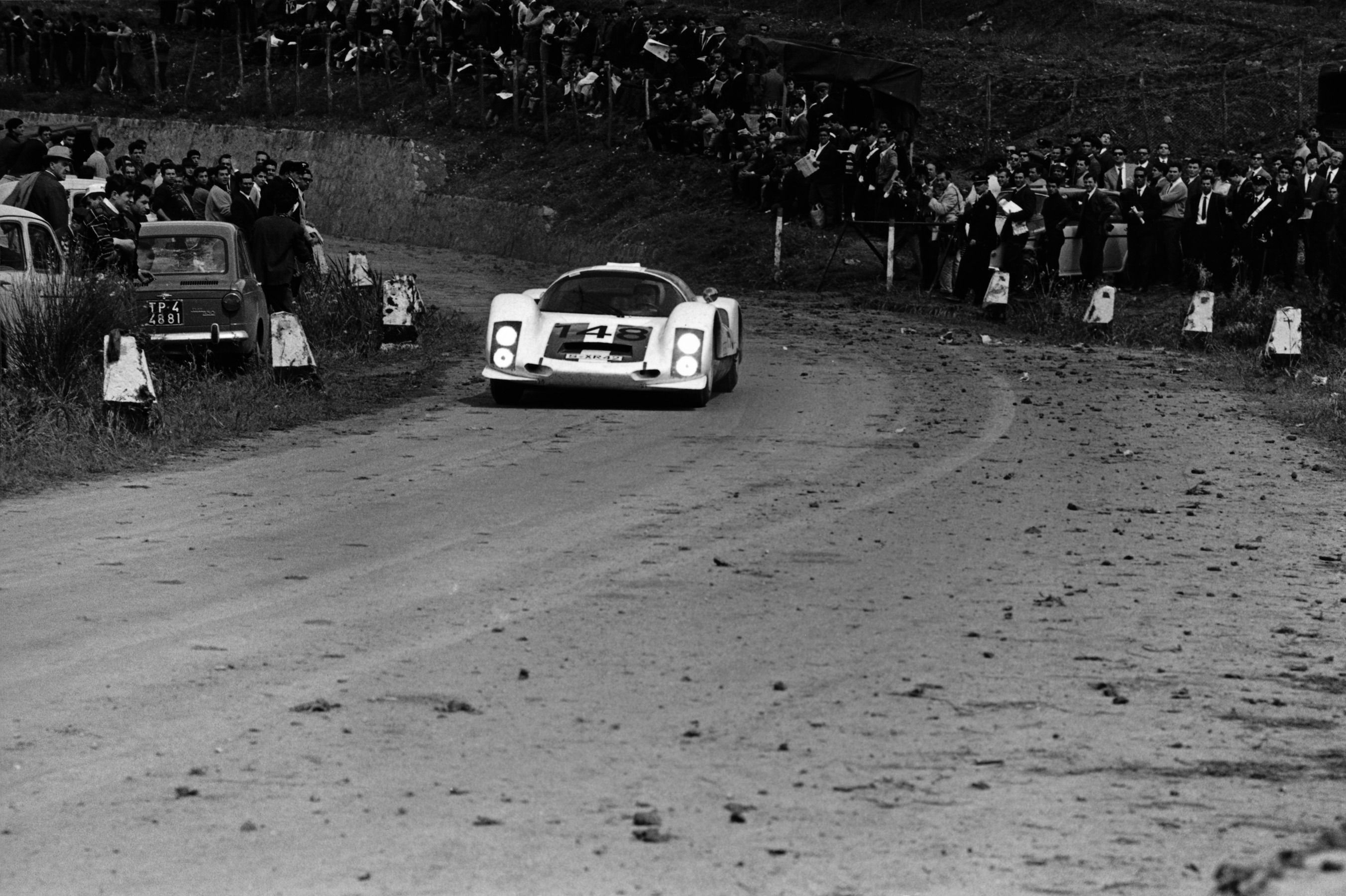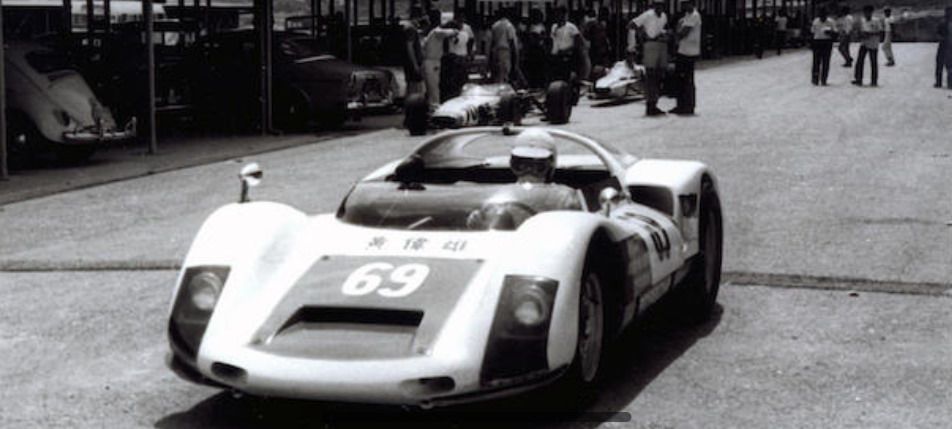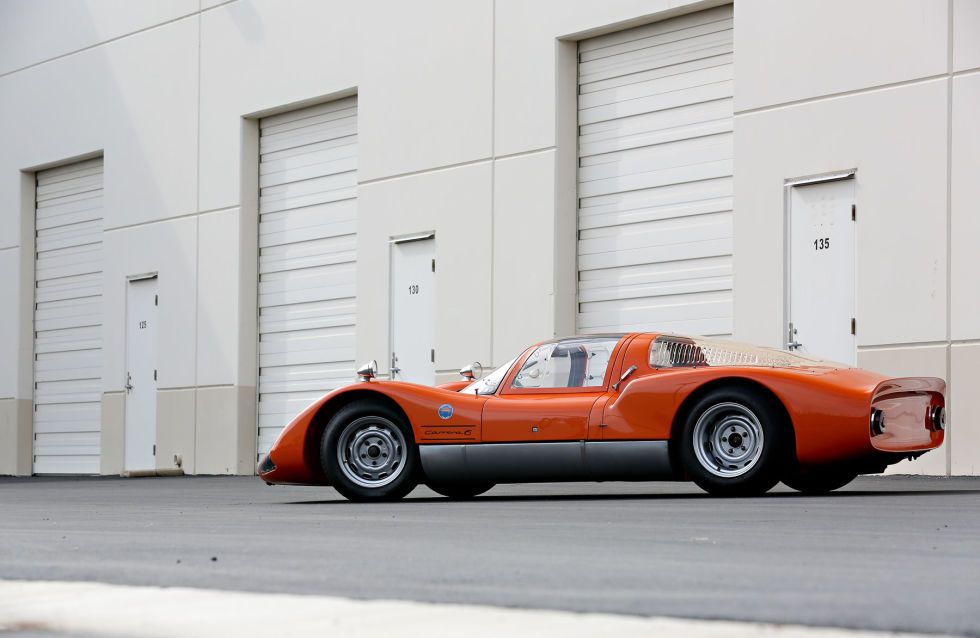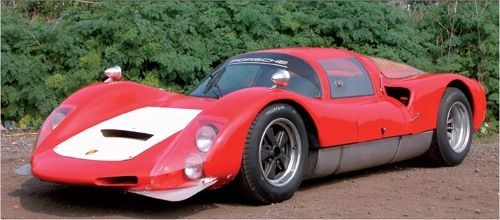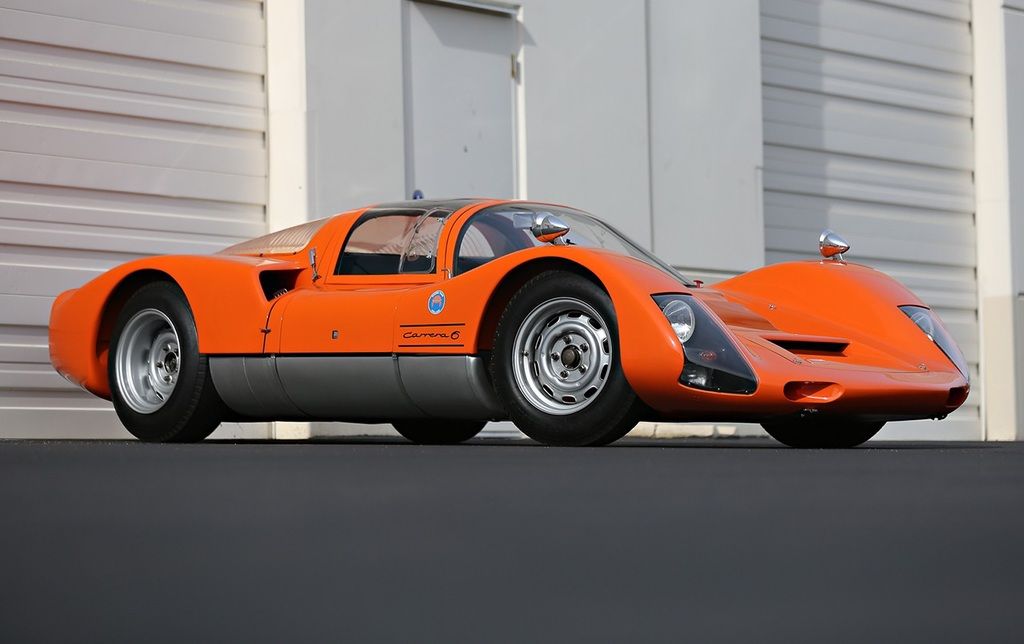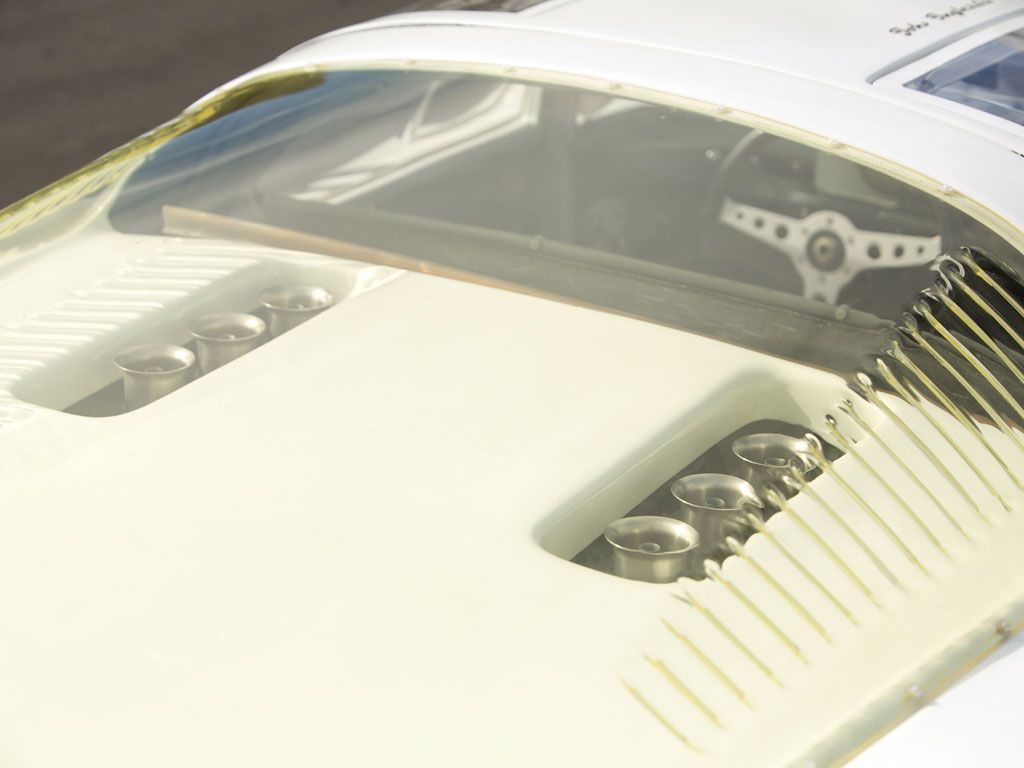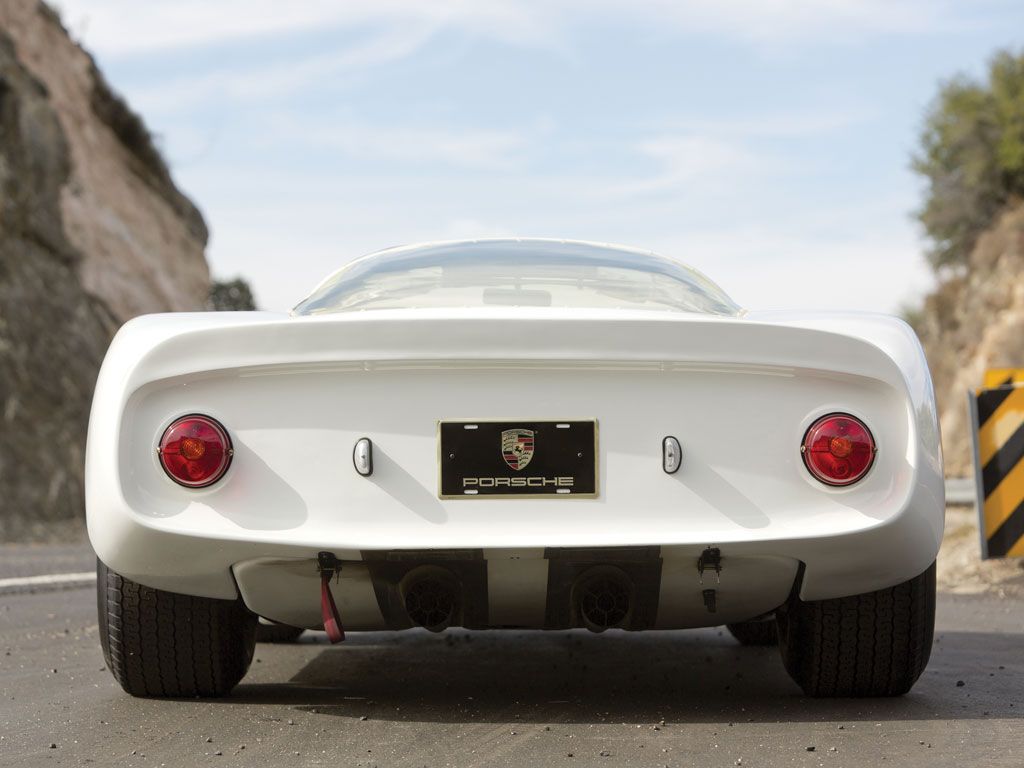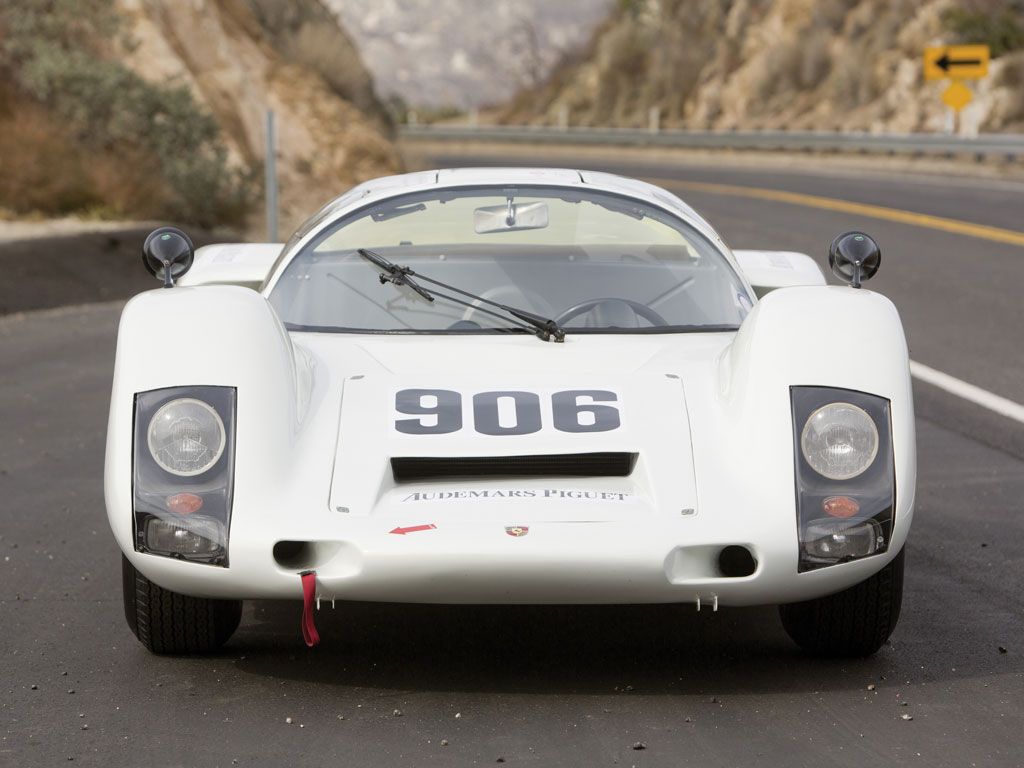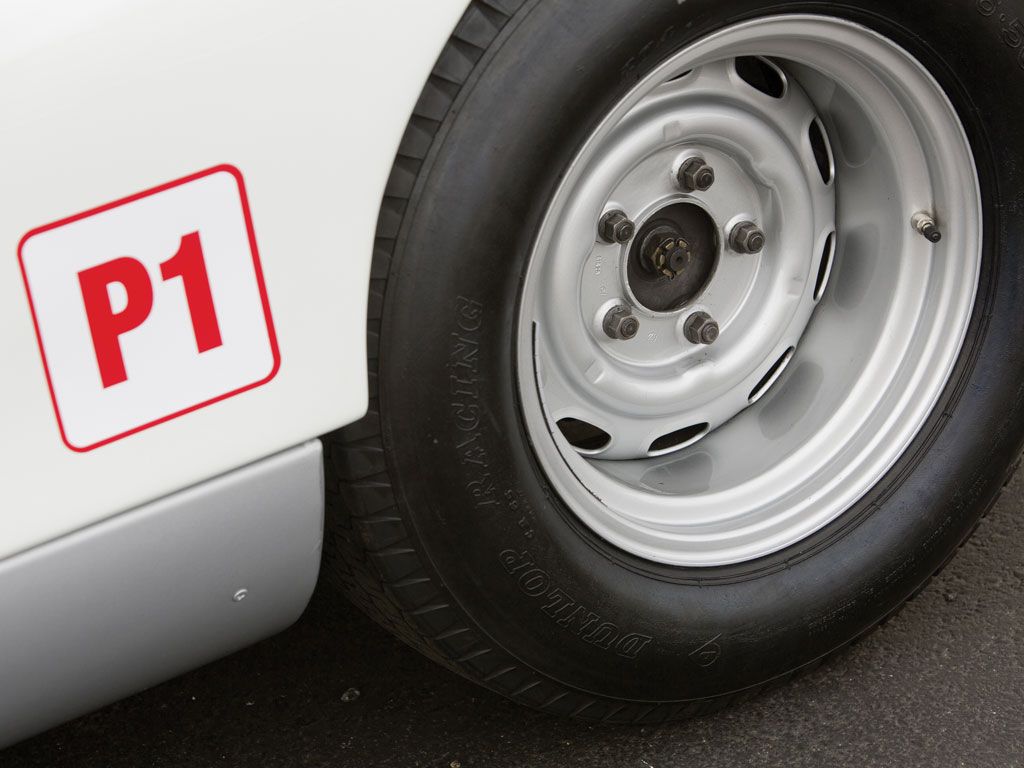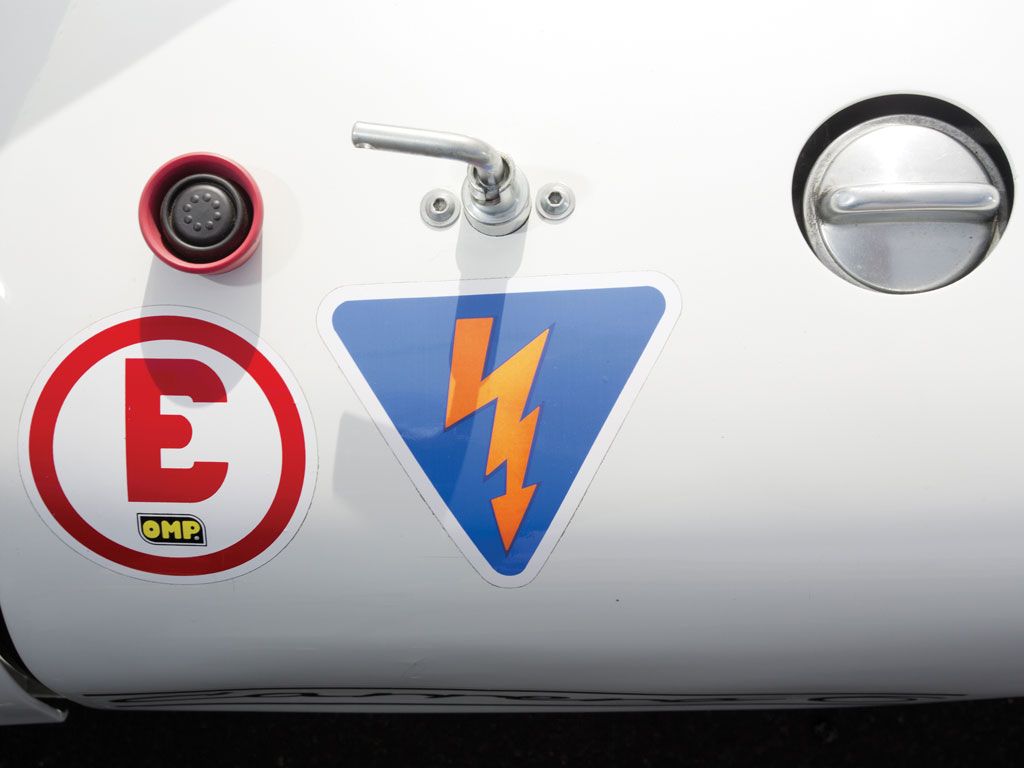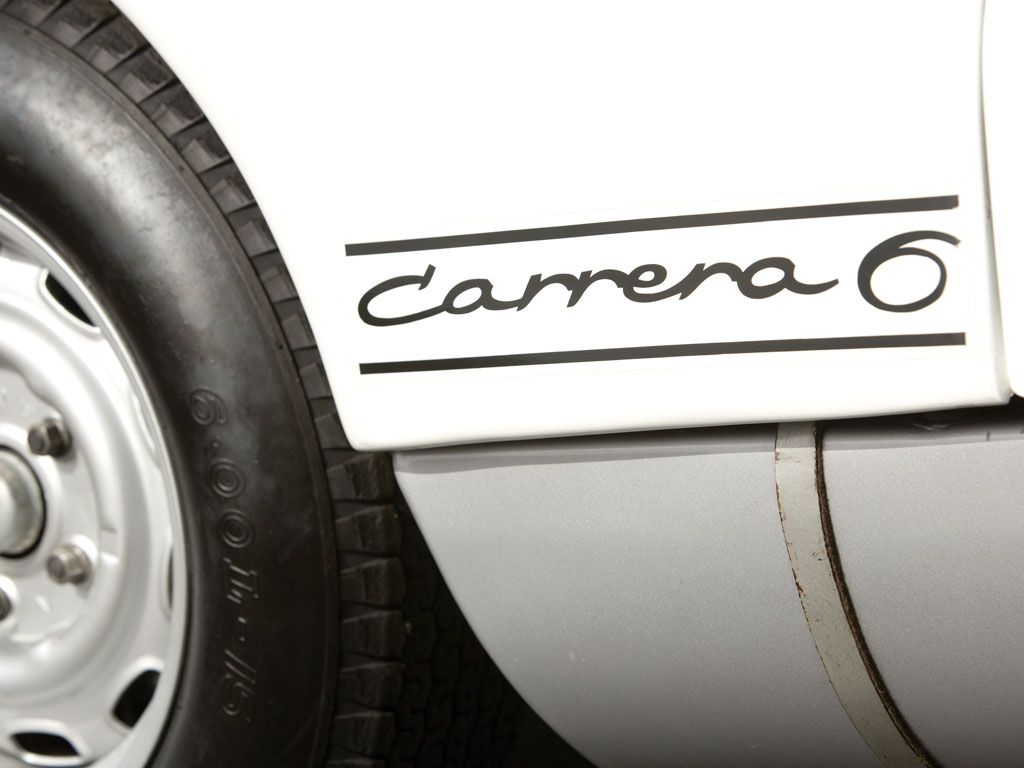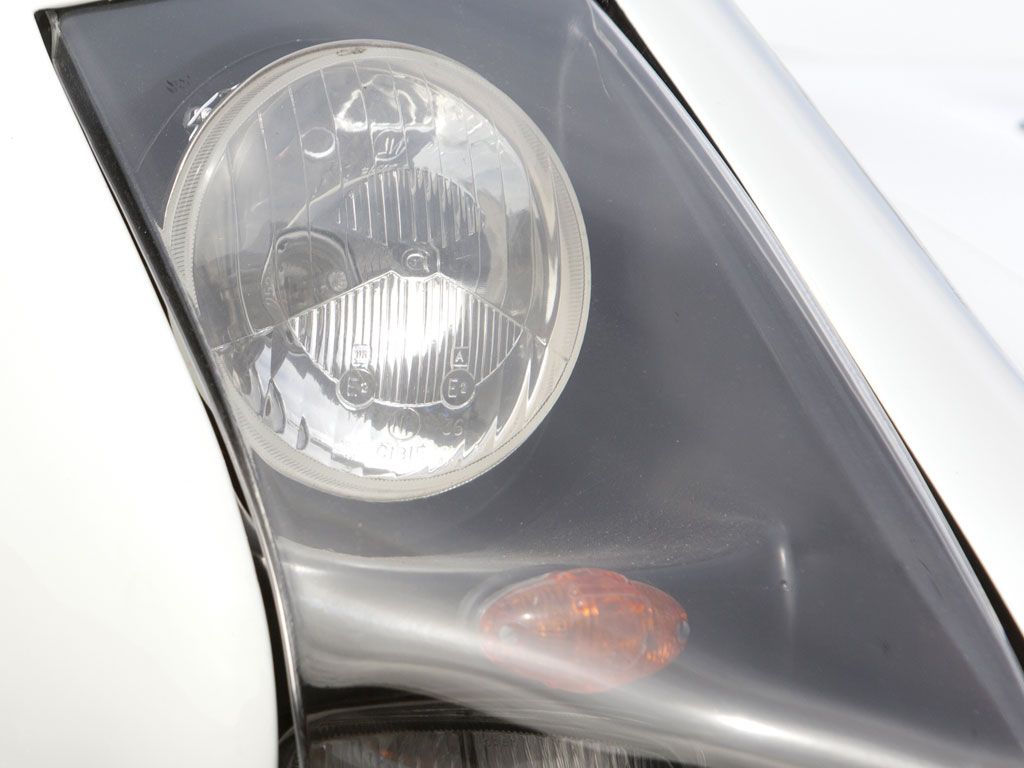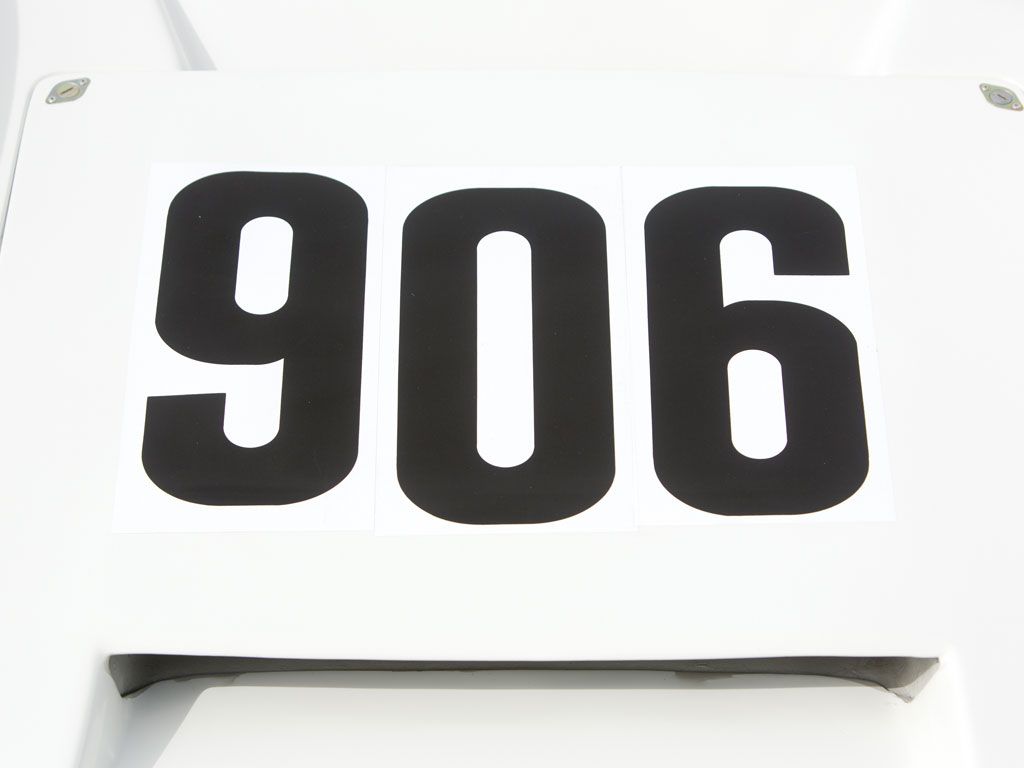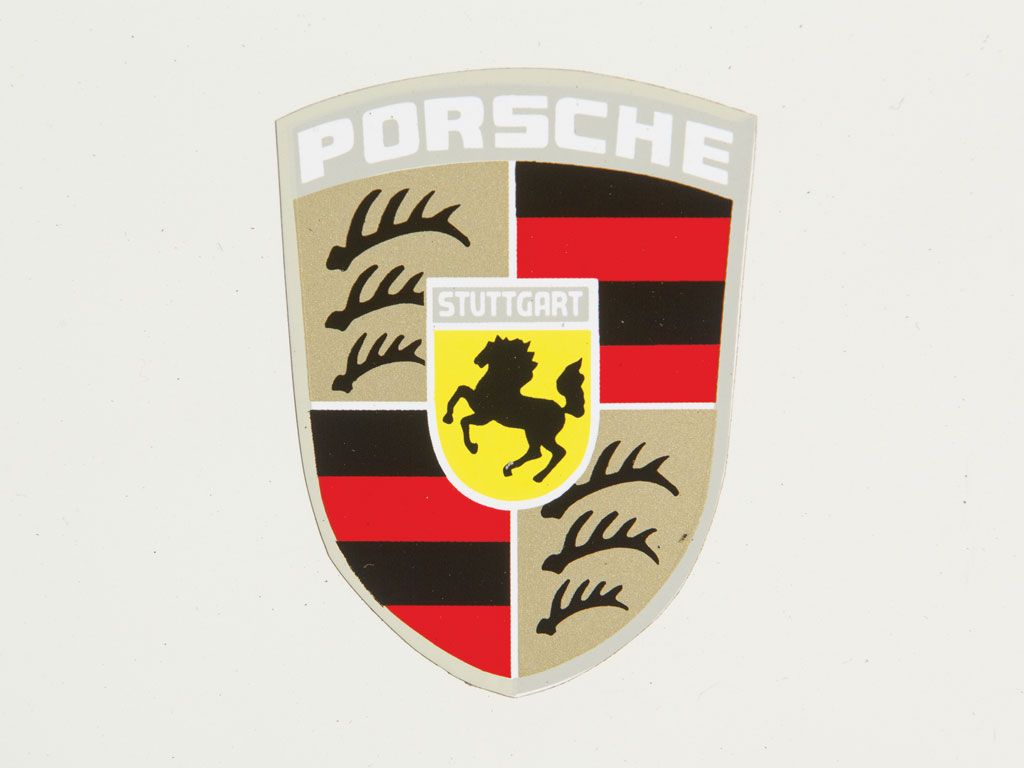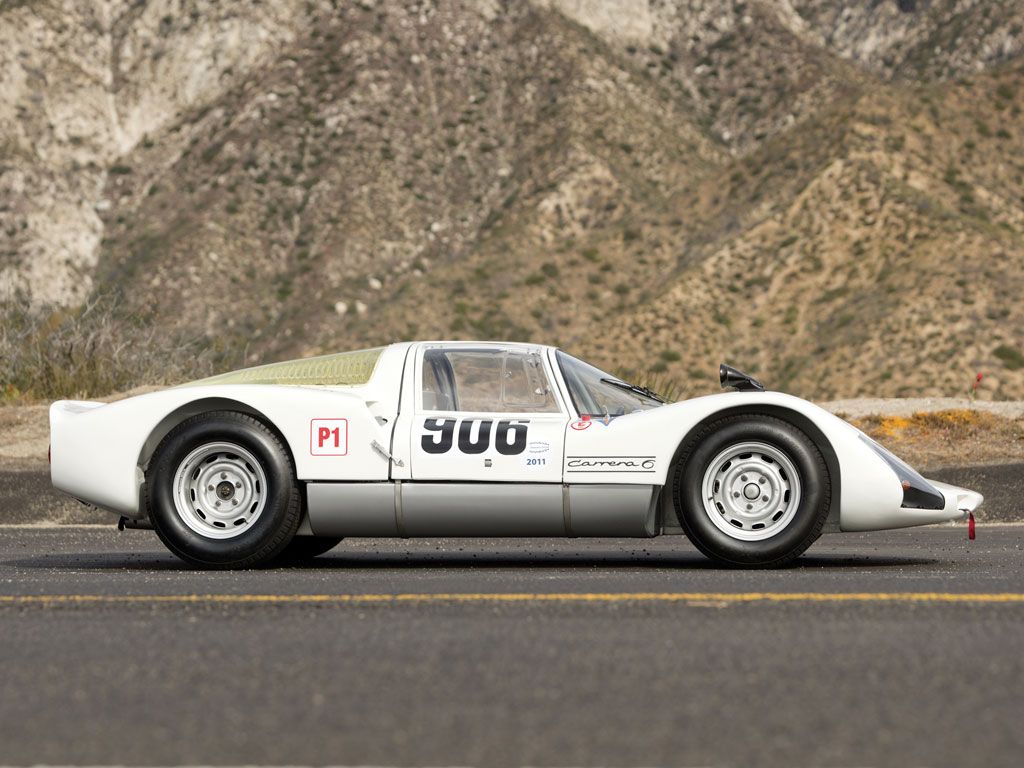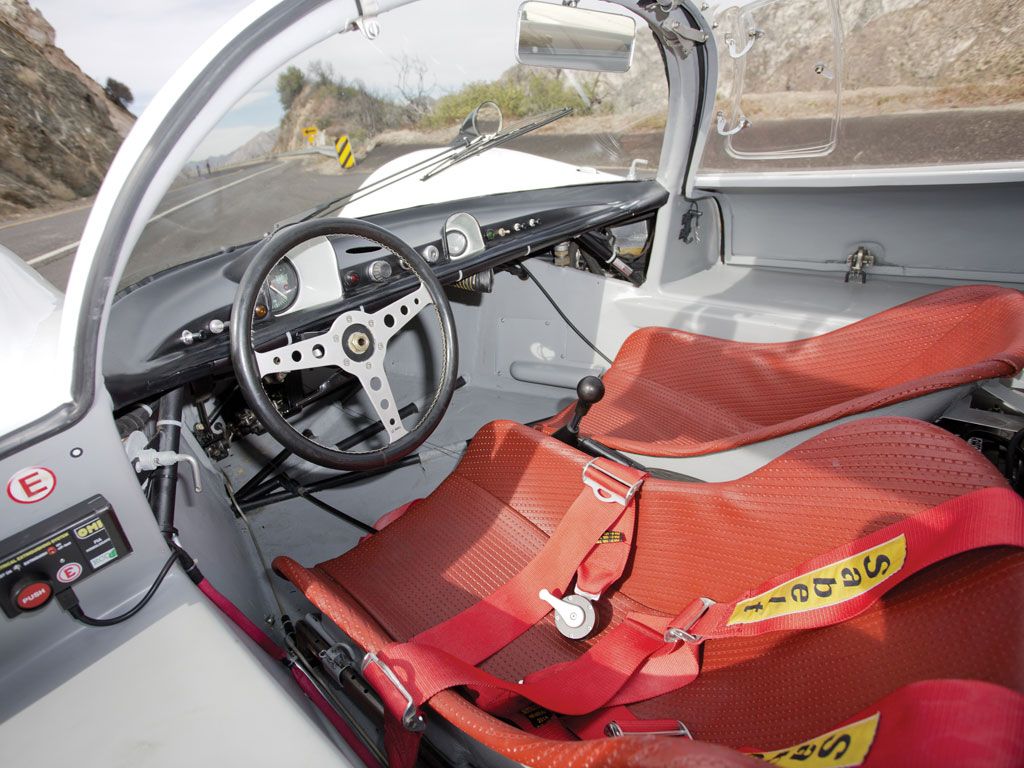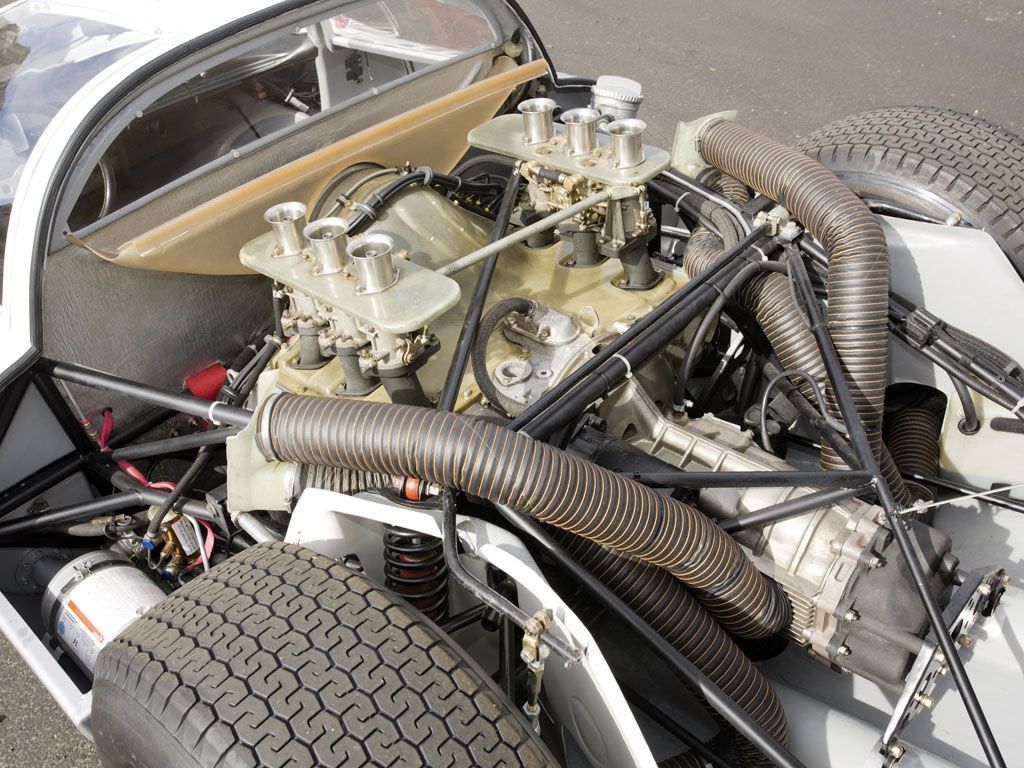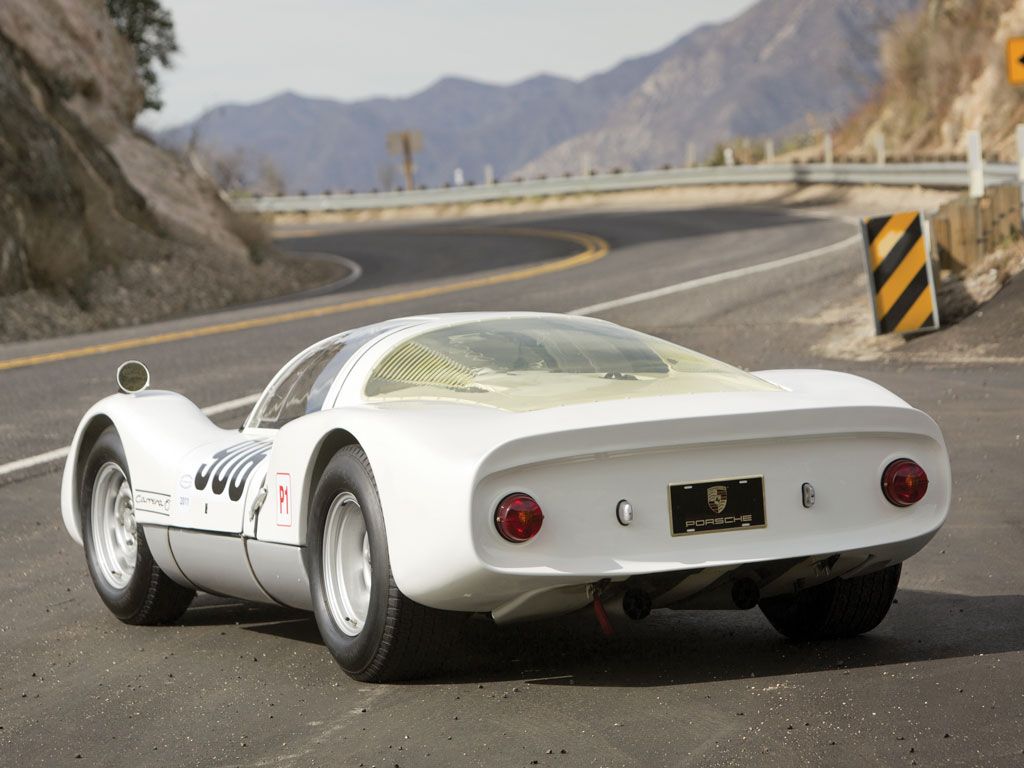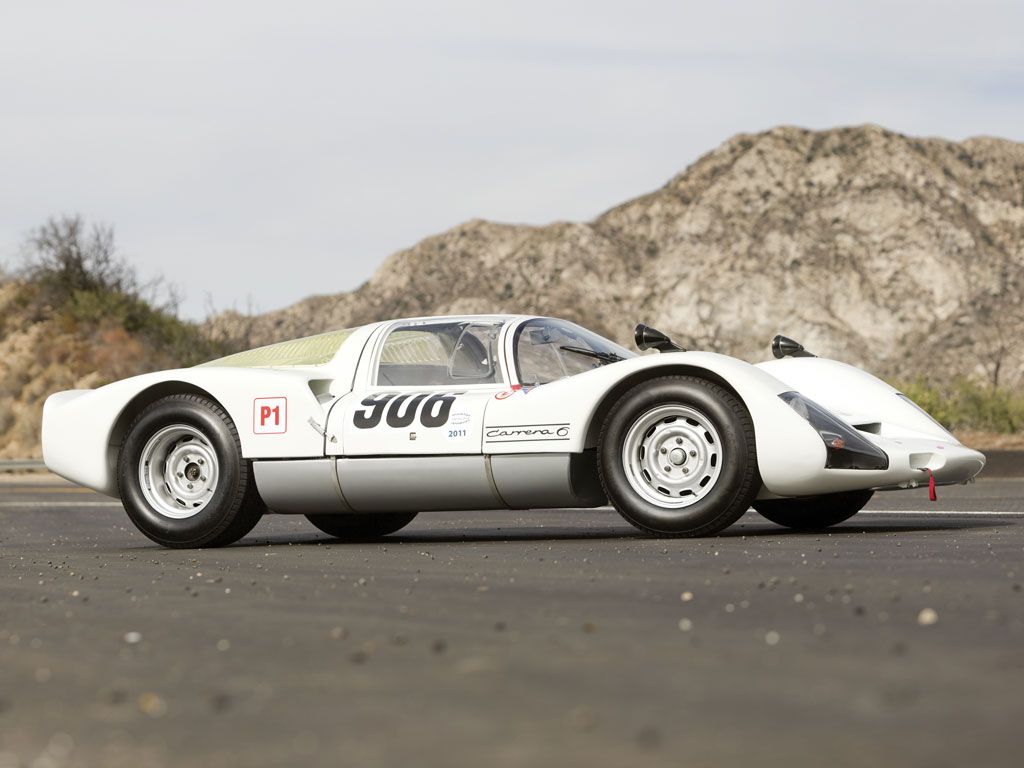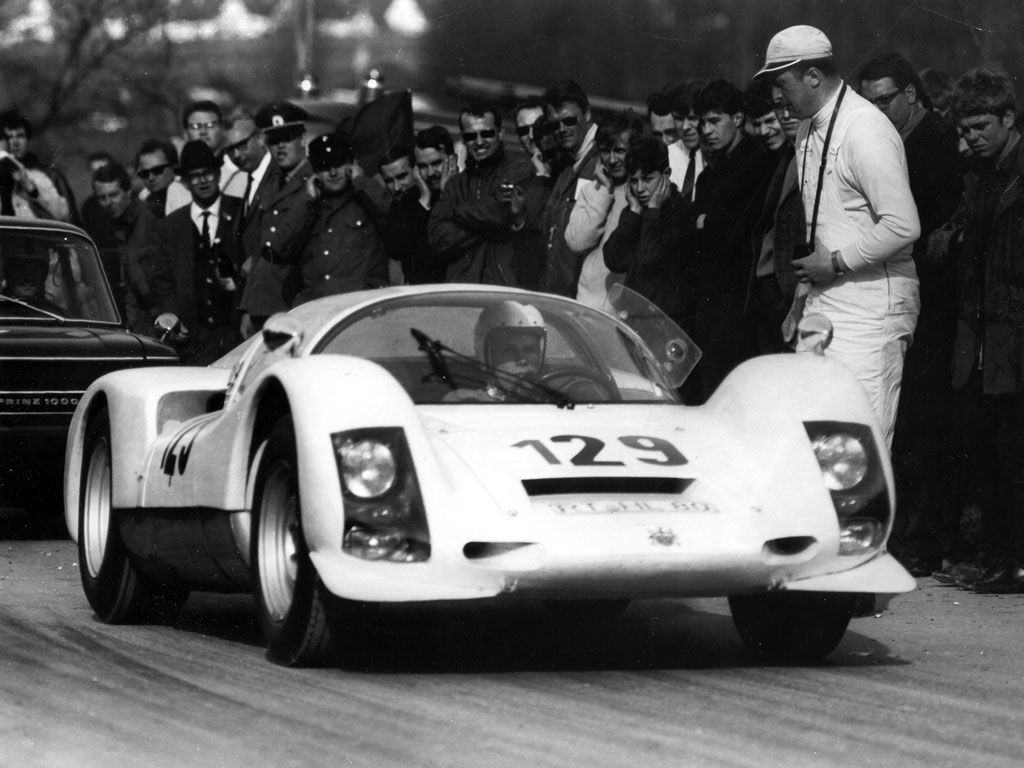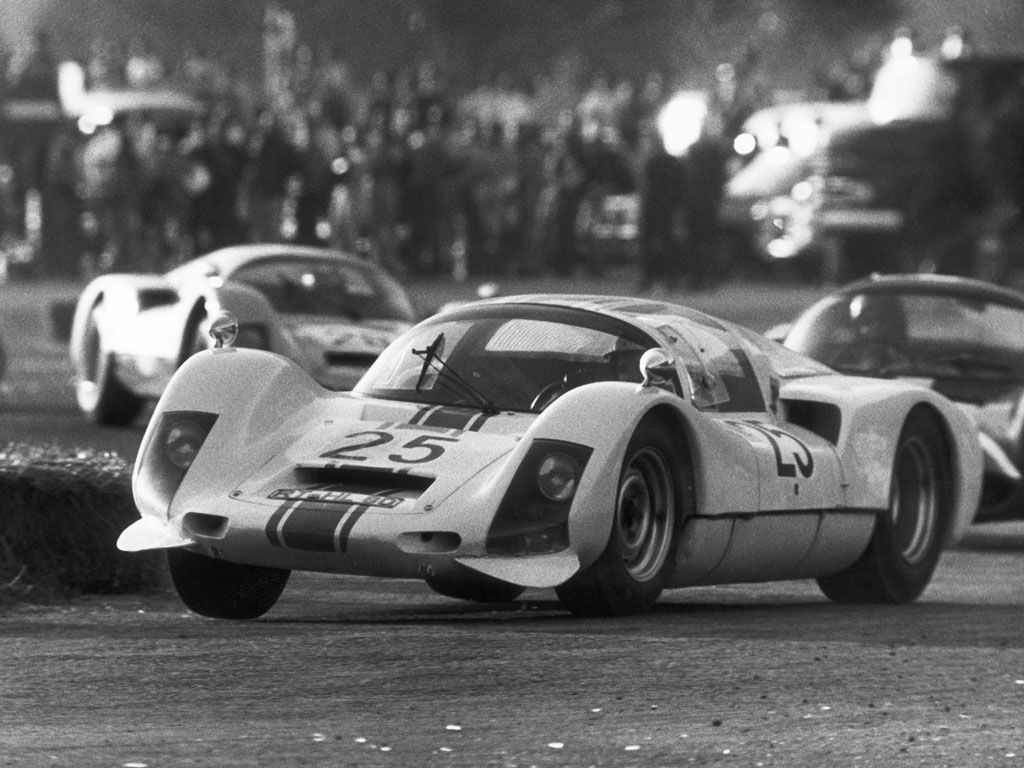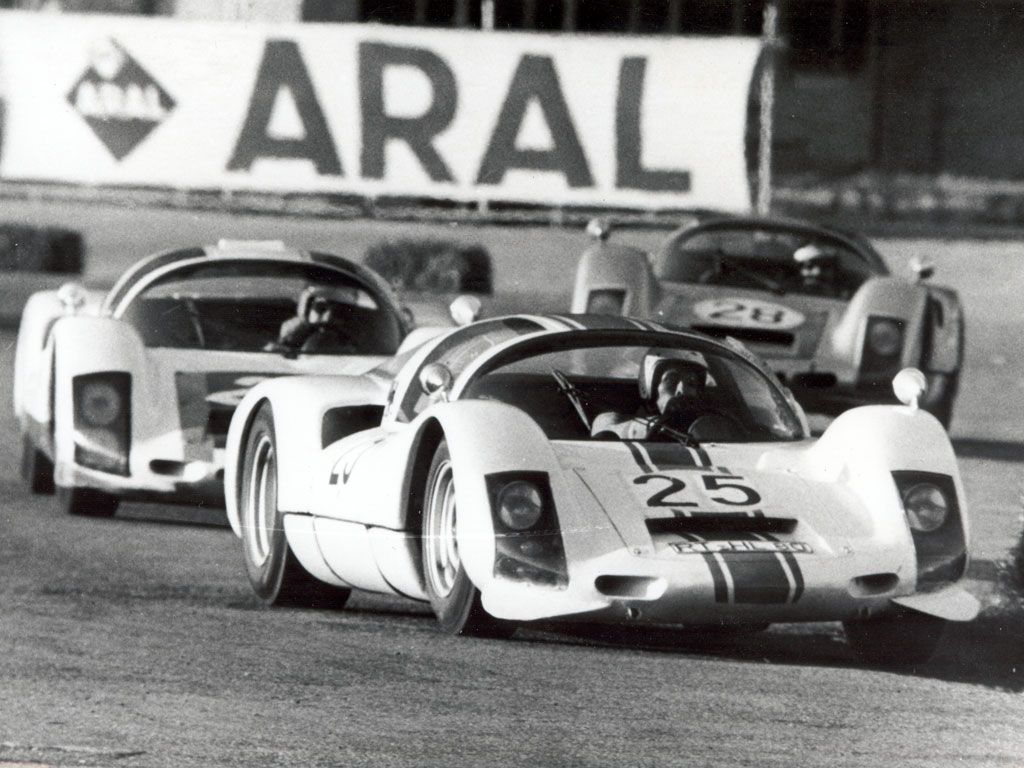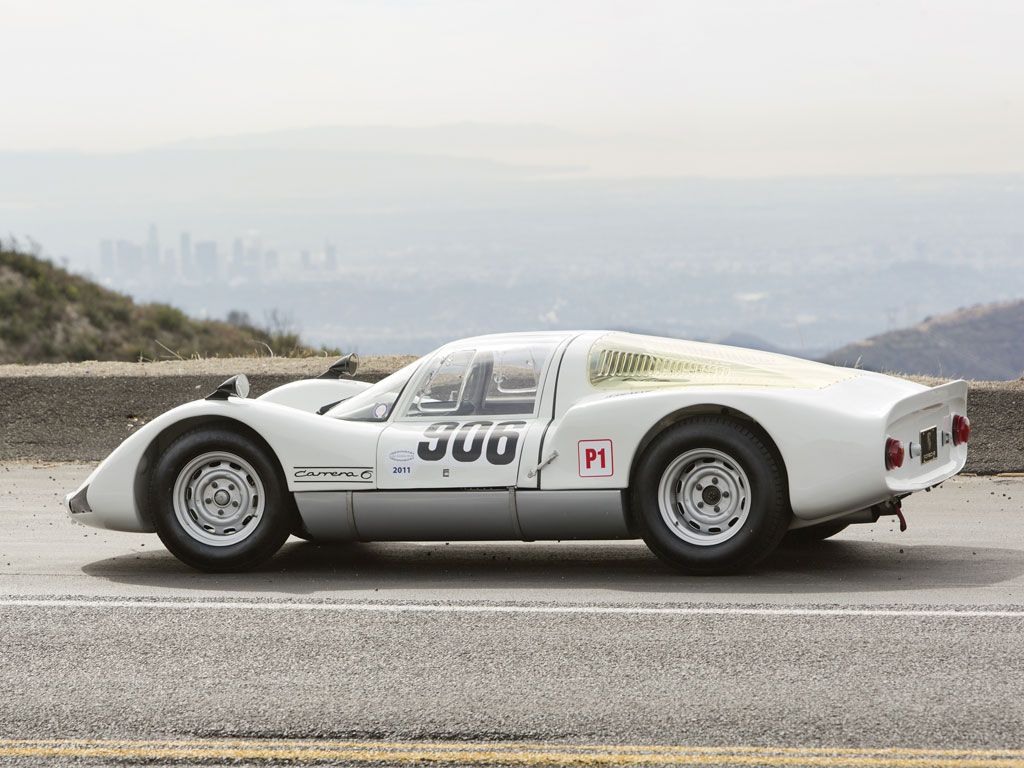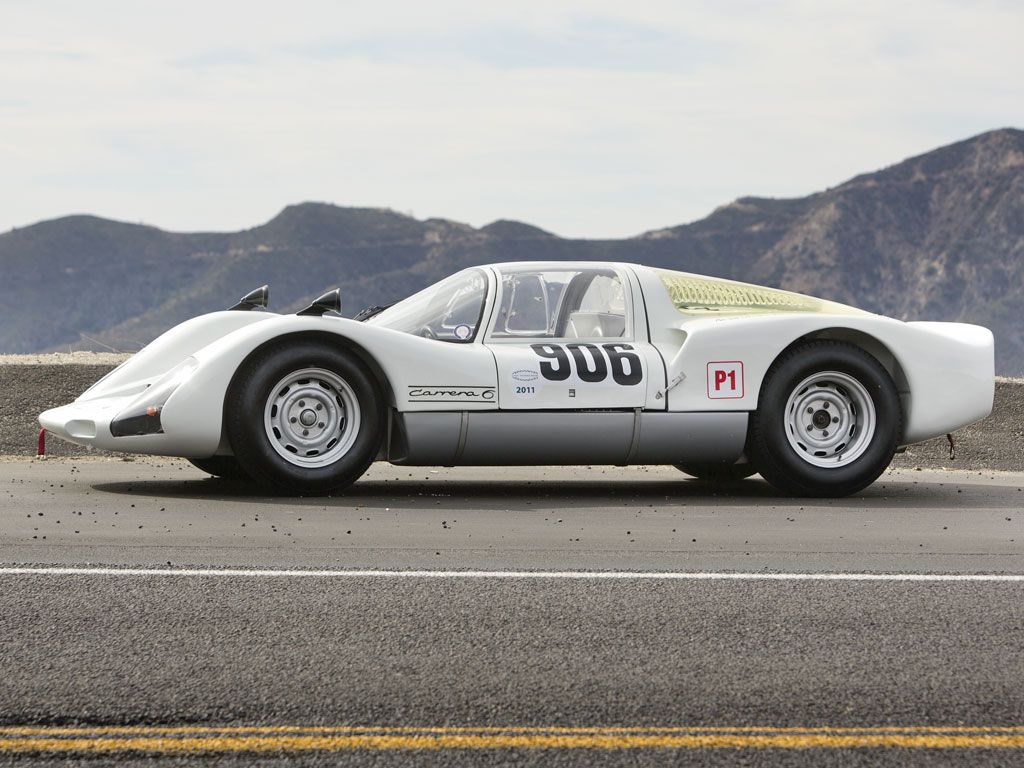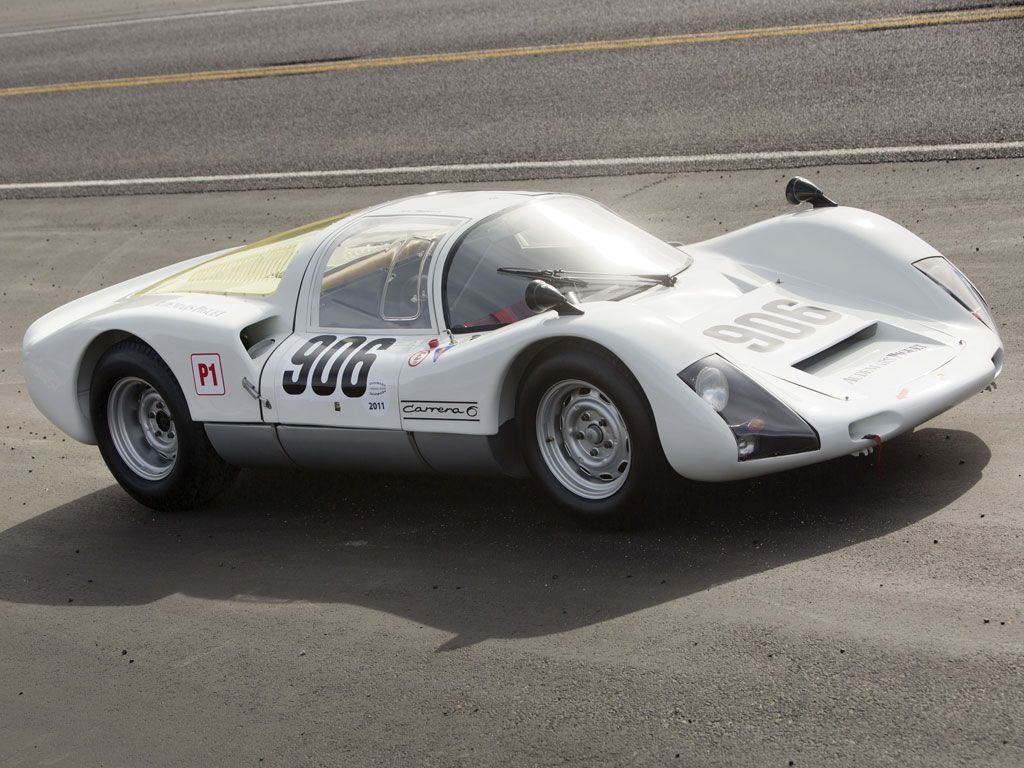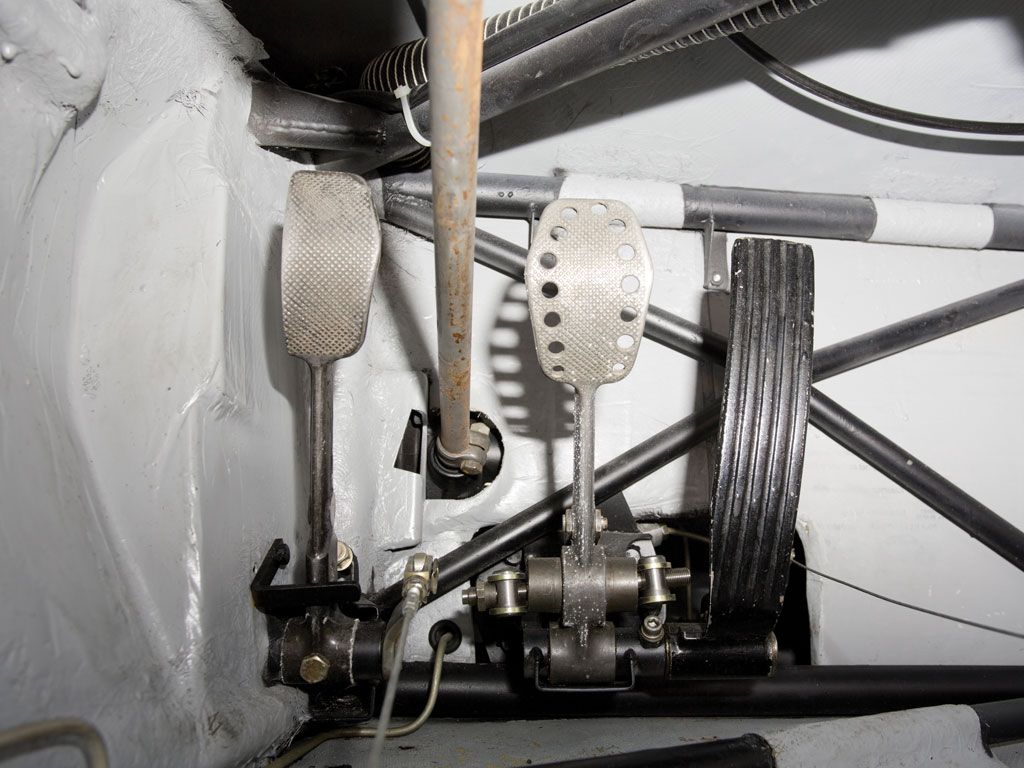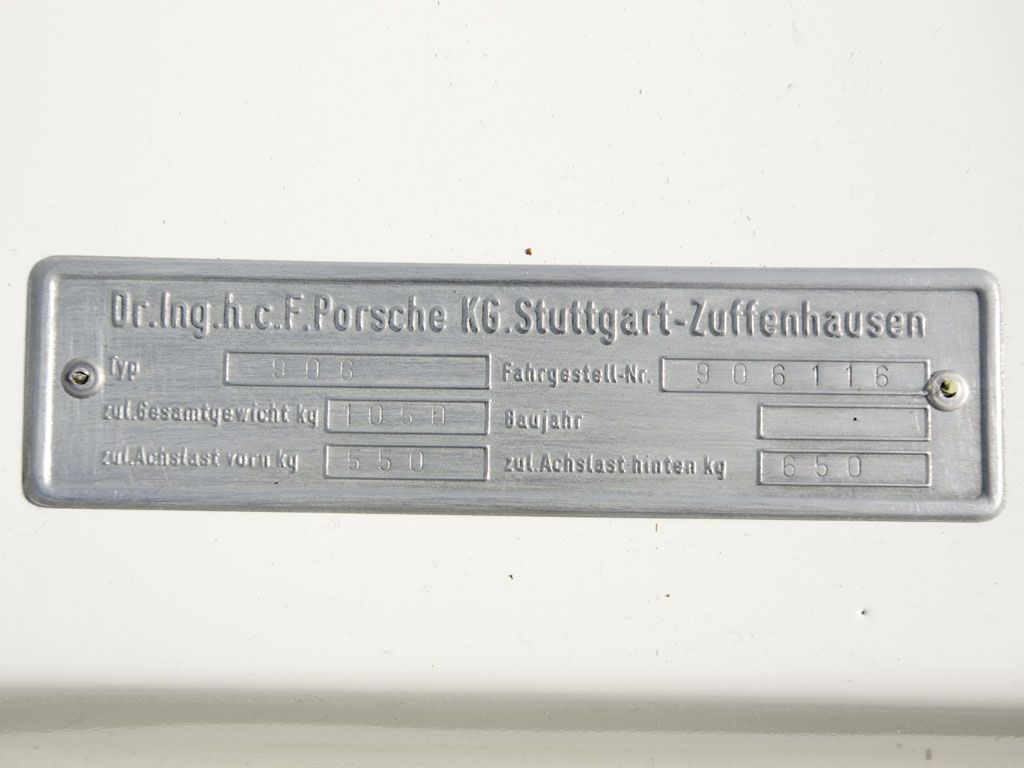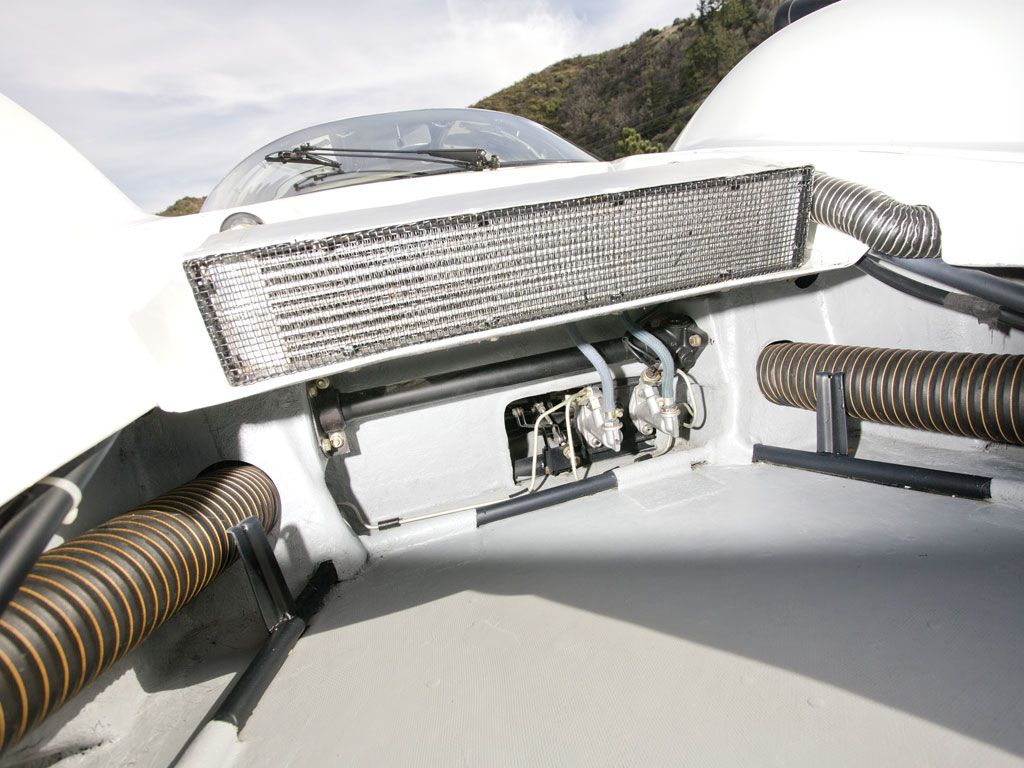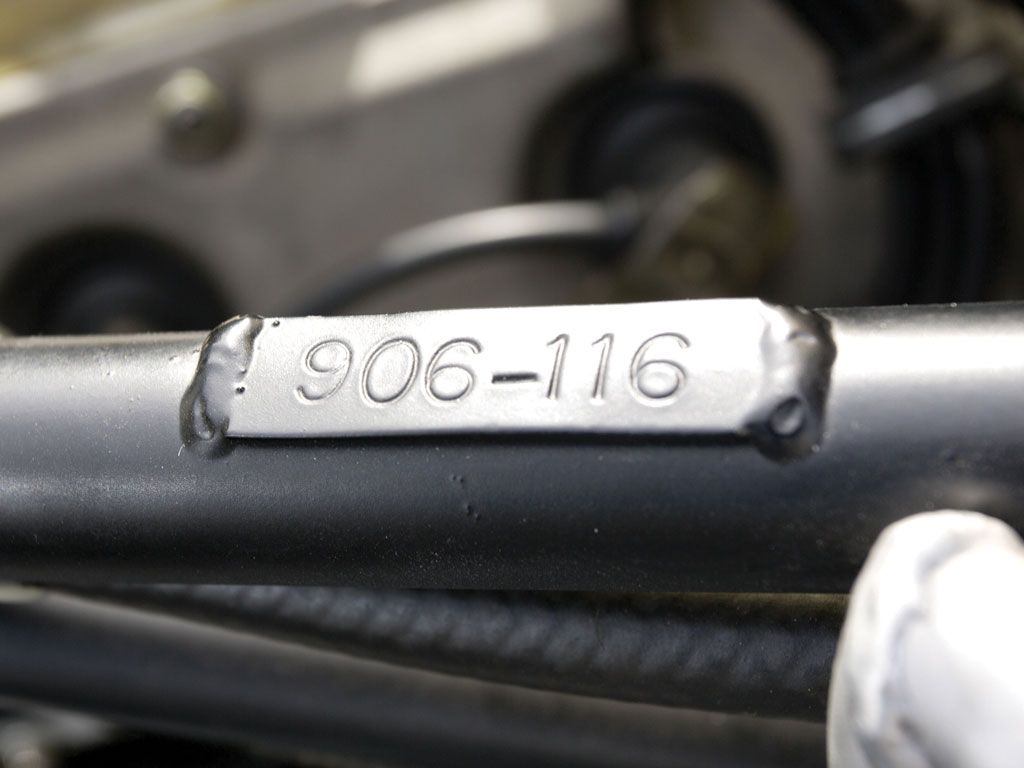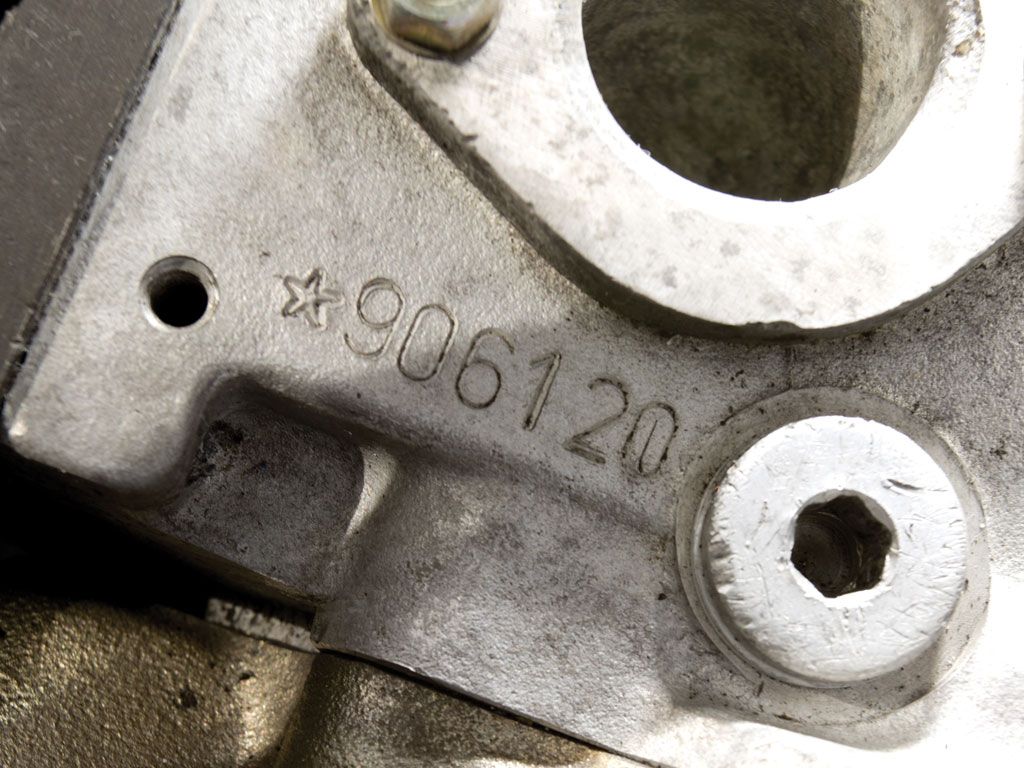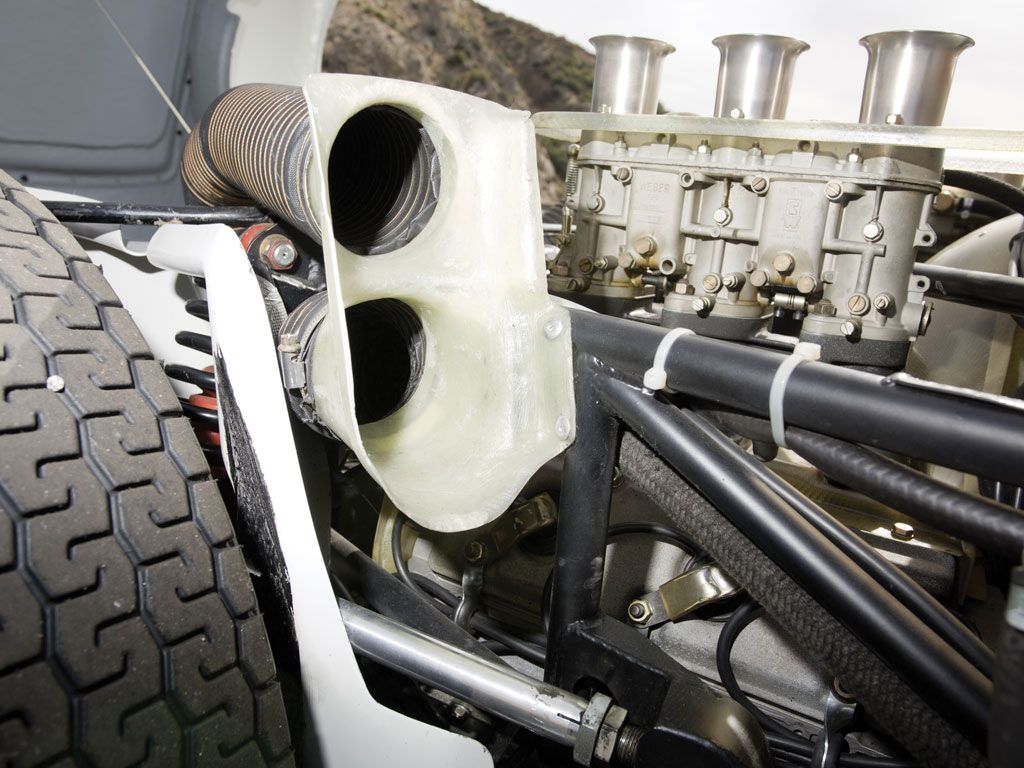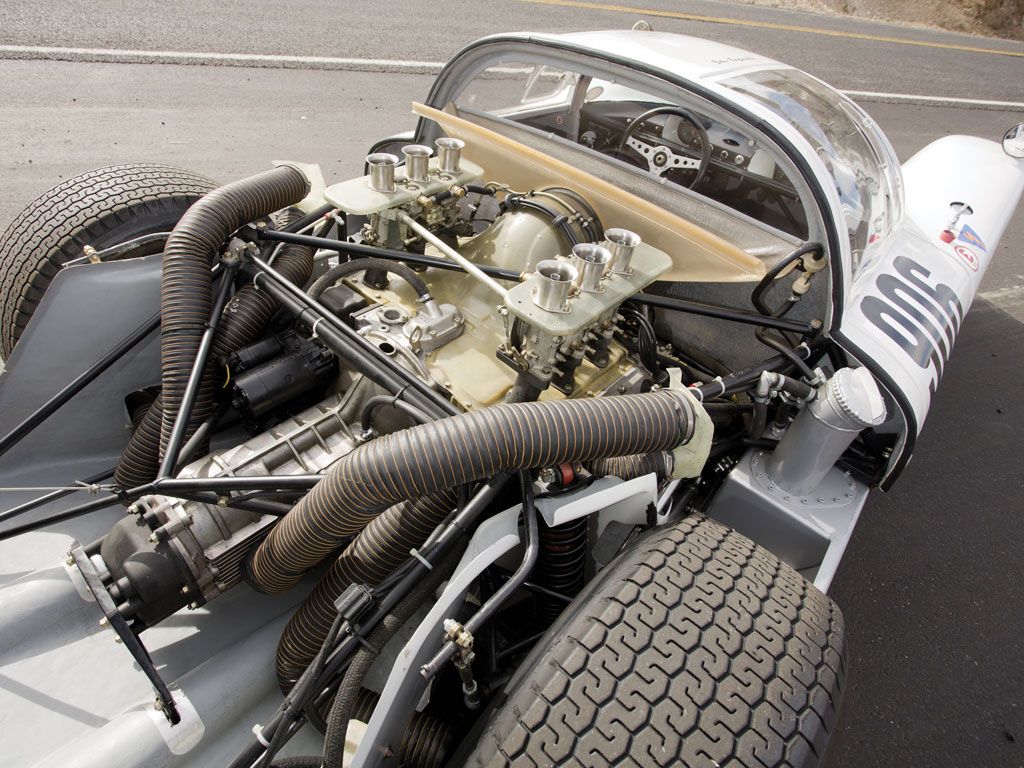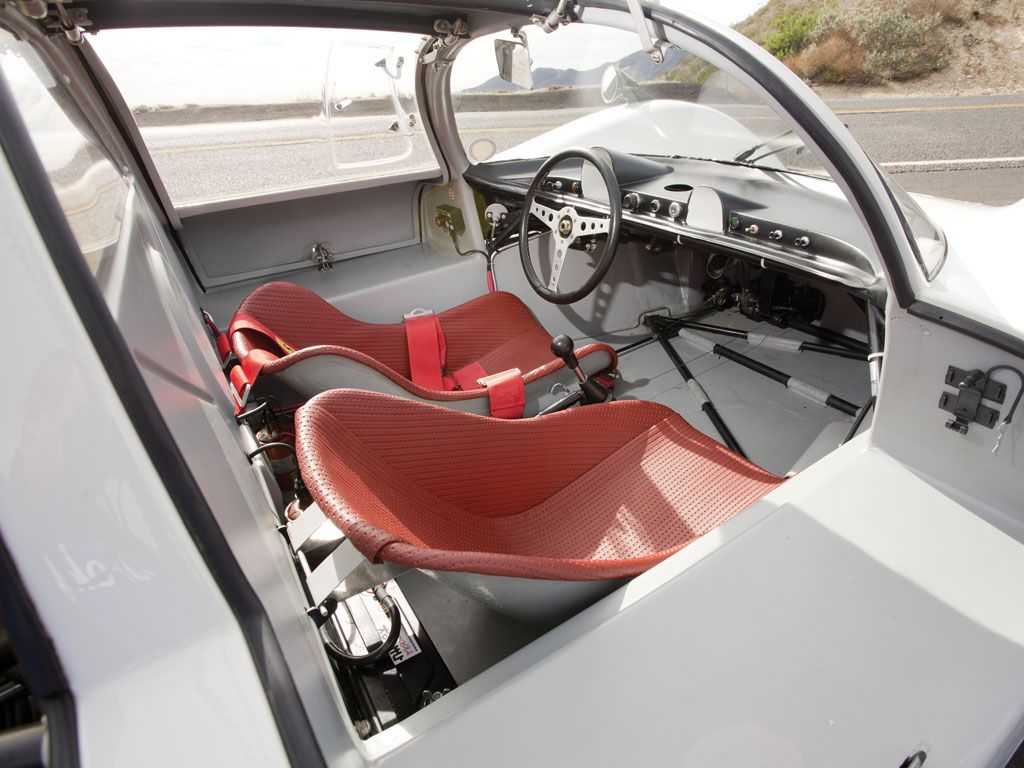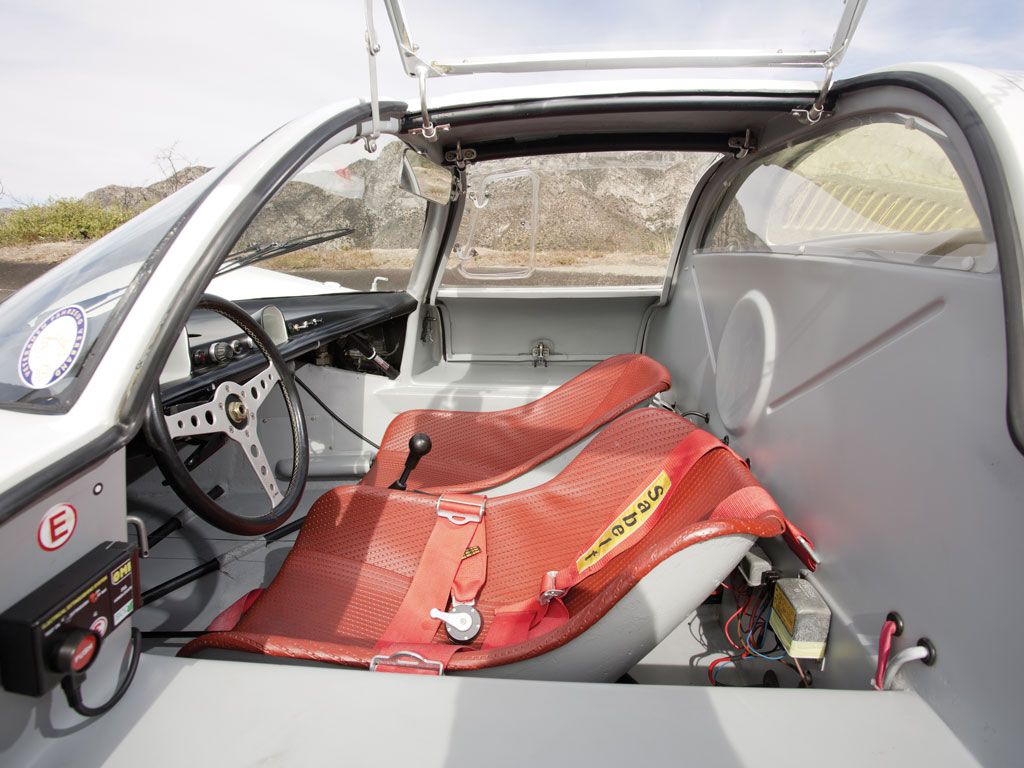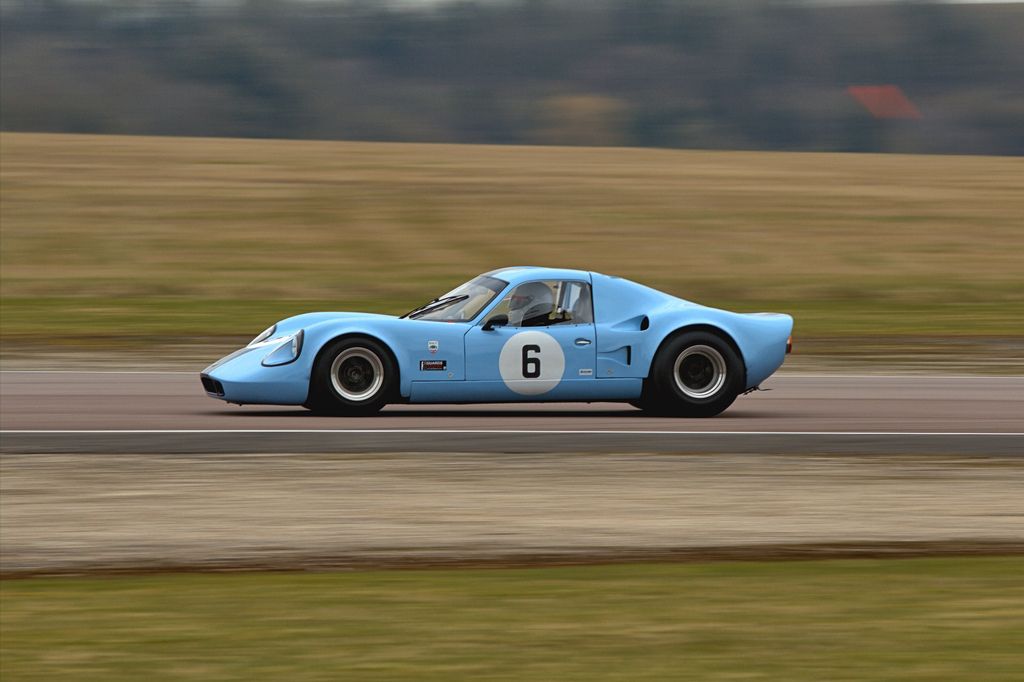Widely known as Porsche’->ke1s last road-going sports prototype, the Type 906, also known as the Carerra 6,->ke574 celebrates its 50th birthday in 2016 and, given its importance in Porsche’s racing history, a look back is by all means necessary. While not innovative in its own right, the 906 put the brand on a road that led, to the launch of the astounding 917 which, like many success stories, had somewhat humble beginnings.
The beginnings lay in Porsche’s Type 904, which was the last to contest the 2.0-liter GT championship in 1964 and 1965. It was rendered obsolete in only its second year by Ferrari’s Dino 206S. Porsche was forced to step up to the challenge and answered with the 906, which, under different guises, ran in the 2.0-liter class for either sports cars->ke506 or prototypes. It was also the first Porsche to accommodate a long-tail (lang-heck in German) configuration for the Le Mans->ke1591 race alone. A number of updates kept the 906 popular among privateers up until the dawn of the 1960s at which time it was still competitive in the 2.0-liter class as the championship’s focus had shifted toward the 5.0-liter sports cars and the 3.0-liter prototypes, respectively.
Following Porsche’s ethos of learning from the past and applying it to the future, the 906 carried over the suspension and brakes from the 904. Otherwise, it was a completely new car down to its tubular space frame. In racing terms, the 906 was a success, scoring big from its debut onward, a highlight being the victory in the 1966 edition of the famed Targa Florio, which was run in pitiful conditions with rain and fog all the way.
Continue reading to learn more about the Porsche 906.
1966 Porsche 906
- Make: Array
- Model: 1966 Porsche 906
- Engine/Motor: flat-6
- Horsepower: 220
- Torque: 145
- [do not use] Vehicle Model: Array
Exterior
Ferdinand Piech made his true entrance among the ranks of Porsche’s Motorsport department with the 906. It was the first of seven cars Piech would design in the next few years and also the first to use the advantages of a wind tunnel –- hence a Cd of only 0.35. But, the shape of the car wasn’t only dictated by the air, as budget also played a part in the process.
Ferry Porsche, Ferdinand’s son and the man in charge at the time, was one who always kept a close eye on expenses -– which is why the Stuttgart-based firm quit racing in F1. A lot of money had gone a year prior in buying parts for another batch of 100 904s. As only 10 more 904s made it out of the Zuffenhausen factory, the amount of spare parts, like spare wheels, was considerable.
Piech originally wanted to install 13-inch diameter wheels, similar to those on the F1 cars, but since the factory found itself with an abundance of 904-style 15-inch wheels, it was decided that these were to go on the 906 as well. Due to the bigger wheels, the front wheel arches gained a bigger slope, as opposed to the rather sleeker profile of the Butzi Porsche-penned 904.
The body itself was made out of fiberglass, a move from the 904s design principles which had its body made out of glass-reinforced plastic (GRP), which was glued to the sheet-steel backbone. The reason for the switch was two-pronged: first, as the glue aged, the body would start to flex and this often required certain maintenance jobs to be done under the skin, which were expensive. Also, because the rulebook for Group 4-spec race cars now only dictated 50 cars to be built which could have less resemblance to a proper road car, the 904’s box section frame was no longer a necessity. Thus, Porsche returned to the steel tubular space frame design, a design carried on for the following Porsche-badged prototypes.
Although it might seem somewhat strange by 1966 standards, each of the 50 cars was tested at the Hockenheim track in Germany which, mind you, was a much faster track at the time with two long straights connected by a long hairpin at one end and by a technical set of bends at the other. Adding to the first 50 built, Porsche also constructed nine more chassis' which received some special treatment from Bosch in the form of mechanical fuel injection.
Two other cars were built especially for the grueling Nurburgring 1000 km race as well as the Targa, the main change being a flat-eight engine that replaced the flat-six that equipped the other cars -– a powerplant that was originally to be fitted in the back of the 904. Given its light tubular chassis and the even lighter fiberglass body that featured top-hinged gullwing-style doors, the 906 only weighed 1.300 lbs. Of note is that the 906-E also featured a longer nose and lacked the winglets mounted on the “short-nose” version.
Interior
The interior of the 906 is as bare as can be with one exception -– the presence of the passenger’s seat, which was, in fact, usable (as opposed to that in the 917 or, more notable, those in the Group 6-era open-top prototypes). Behind the three-spoke steering wheel sits the tachometer with the oil gauge down the middle of the dash.
An array of buttons and switches complete the look of the interior. Due to the shape of the front fenders, it was decided that the mirrors should be fitted on top of them for better visibility from inside. In terms of creature comforts, the 906 has windows and that’s about it.
You don’t get any soundproofing and there’s no A/C as one would find in modern sports cars. You could say that the driver took just as much beating as the cars in endurance racing half a century ago and you couldn’t be closer to the truth.
Drivetrain
The air-cooled, SOHC, boxer, flat-six originated from the Porsche 901 and was the engine of choice for the 906. It had a lightweight, seven-main- bearing case. Many of these magnesium-built cases proved problematic early on, and they were replaced with new factory sand-cast aluminum pieces. The cylinder heads were made out of aluminium while the crankshaft was made out of forged steel and had titanium connecting rods.
With an 80-millimeter bore and a 60-millimeter stroke the engine’s capacity rose to 1,991 cmc (121 cubic inches). The engine, equipped with double triple-throat Webers, produced roughly 220 horsepower which, in turn, made a 170-mph top speed possible. Maximum torque was rated at 145 foot-pounds at 6,000 rpm, with max power being reached at 8,000 rpm.
Mated to the flat-six was a fully-synchronized five-speed gearbox that had its gear ratios modified for almost each event as some, like the Nordschleife or certain hill climbs, required short gears while the quicker tracks, like Le Mans, required longer gears. The oil cooler was seated at the front, its position hinted by the air intake on the nose.
While the few 906/8s, as they were unofficially known, did not prove successful, they helped Porsche with their future eight-cylinder- engined racers.
Racing History
The Porsche 906 debuted long before all of the mandatory 50 cars were built, a works entry showing up at Daytona for the first ever 24-hours- long race held on the oval. It was a successful first outing for Hans Herrmann and Herbert Linge, the duo finishing sixth overall and winning the 2.0-liter Prototype category.
The cherry on top of the cream was taken by the brand-new Ford Mk.IIs that dominated the event ahead of Chaparral’s fast but troublesome 2D and Ferrari’s 330 P3. Up next came the Sebring 12 hours when the Porsche 906 fleet first took the track alongside Ferrari’s 206S Dino. The Italian car was quicker but frail while the Porsche, in usual German tradition, made it to the flag quick enough to claim another clear victory.
Porsche debuted the long tail at Le Mans where the cars ran faultless behind the Fords. The 906s finished in formation 4-5- 6-7 overall, winning in both the P 2.0-liter class and the S 2.0-liter class (where a short-tail 906 won). Also that same year, Scuderia Filipinetti’s privately entered 906 won at the Targa Florio ahead of the works cars – and this was, mind you, an overall victory.
Across the pond, the fuel-injected 906E proved more popular, the few chassis built doing double duty between the USRRC and, later, the new Can Am series. While not a contender in the truest sense (its 2.0-liter engine seemed puny compared to the 7.0-liter ones of the McLarens and Lolas), it did win in the U2L class. The 906 scored other class wins at Spa, the Nurburgring and Nassau.
Come 910, Porsche had already cooked up their next contender, the oddly-numbered 910 which was the main weapon of the works team that year. Still, the 906 soldiered on, both in privateer hands as well as for the factory. The privately-entered Squadra Tartaruga 906 LH finished 5th at Daytona and sixth at Sebring in 1967. Class victories, as well as overall wins in minor events, kept coming well into the late 1960s proving that there was no better car for the S2.0 / P2.0 classes than the 906. In fact, the car proved so popular that it kept being raced as late as 1977, over 10 years since its first race.
Prices
As with many vintage racing cars, the 906’s prices range from just over 600 grand to just over $1,7 million. What’s behind the huge gap? Well, it’s all about the history behind each and every individual chassis, many collectors being ready to go the extra mile to obtain a class / race-winning example, as opposed to one that only showed up for a bunch of unimportant regional events. So, if you’d like to own that Targa Florio winner from 1966 you should be ready to pay in excess of $2 million.
Competition
Ferrari Dino 206S
Ferrari’s factory-backed 906-beater was powered by a 2.0-liter V-6 which squeaked as it red lined at 9000 rpm. While Ferrari never made 50 206s, the FIA let them run anyway. The spider body which was characteristic of most of the Dinos was penned by Piero Drogo of Carrozzeria Sports Cars. The car featured many engine variations through its life, but none of them were particularly reliable although the team did favor the 206 for the tighter courses such as the Nordschleife. Only 18 of these cars were ever built.
Read our full review on the Ferrari Dino 206S here.
Chevron B6
Derek Bennett’s Chevron cars were some of the most popular sports cars of the mid-1960s, the series that started with the B4 and ended with the B16 having a large fan base to this day when it still enjoys a lot of track time at historic venues. The quality of the early “GT” Group 4 Chevrons was their availability in welcoming a wide array of engines. Some had BMW powerplants while others were given Ford, Repco, Climax or even Mazda rotary engines. While not particularly reliable, they did manage to score a few S2.0-liter class wins – for example at Daytona in 1969 for Raceco of Miami.
Conclusion
The 906 can be simply described as one of the most versatile and reliable sports cars of its time and a true foundation for things to come in terms of Porsche prototypes. It won across the globe, seeing racing action on all kinds of tracks, from ovals to road circuits, and being driven by hundreds of drivers. Whats more is that it stood the test of time and, nowadays, cars with a rich history go well beyond the $1 million mark. Also, they are still road legal today in some parts of the world!

